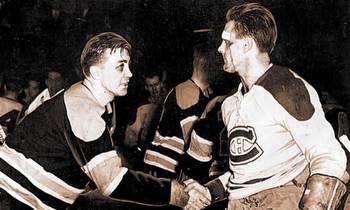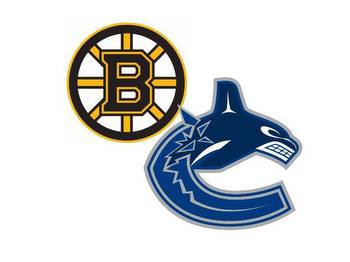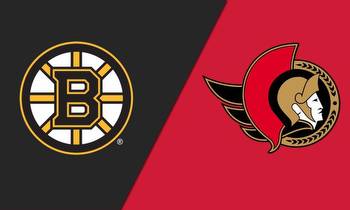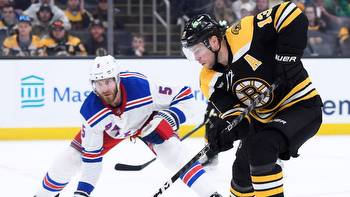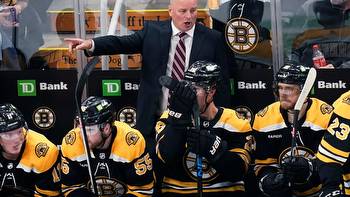10 pressing questions facing the Bruins entering training camp
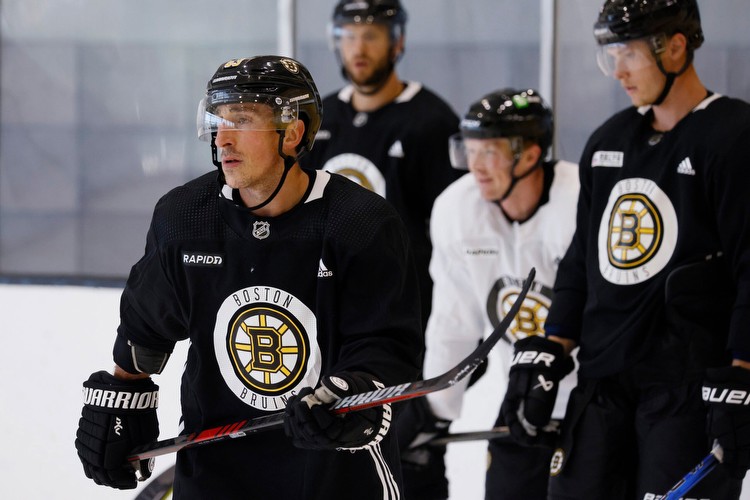
Hockey is finally back in Boston.
The Bruins will open training camp on Wednesday morning, with Jim Montgomery and his roster looking to turn the page after last year’s disheartening ending.
Boston’s centennial campaign will be one of change for the Bruins, especially following the retirements of two franchise pillars in Patrice Bergeron and David Krejci.
Even with the talent drain that Boston underwent following their record-breaking season in 2022-23, the Bruins should still field a competitive club this winter — albeit one with a number of question marks up and down the roster.
Here are 10 questions facing the Bruins going into training camp.
1. How will Charlie Coyle and Pavel Zacha fare as Boston’s top-six centers?
Even with a painful offseason filled with retirements, trades, and free-agent exits, the 2023-24 Bruins should remain a competitive club due to a stout defense and arguably the best goalie tandem in the NHL.
It’s easy to project Boston’s floor as a potential playoff candidate given its foundational strengths in the D-zone.
But Boston’s ceiling and its odds of re-establishing itself as a true contender will rest on how this roster fares with accounting for the losses of Bergeron and Krejci down the middle.
The unenviable task of replacing two titans in Bergeron and Krejci will need to be undertaken by Charlie Coyle and Pavel Zacha.
Of course, the Bruins will not ask both pivots to replicate the two-way mastery and high-end production that Bergeron and Krejci generated for over 15 years together in Boston.
But after holding their own as Boston’s 1-2 punch at center during the start of his team’s first-round series against Panthers, Jim Montgomery believes that Coyle and Zacha have the means to drive play under heavier reps.
“They both can handle a lot of minutes,” Montgomery said of Coyle and Zacha. “Both of them are coming into believing who they are and how they need to play regardless of who they’re playing with … We’re really comfortable, especially after seeing them in big games in Games 3 and 4, playing 19 to 20 minutes and play as well as they did.
“Now, I’m hoping they don’t have to play 20 minutes at night. But we know they can handle that and that they can handle all three zones.”
Both Coyle and Zacha should benefit from stronger supporting casts, with Boston bolstered by plenty of high-end talent on the wing with 61-goal scorer David Pastrnak, Brad Marchand, and Jake DeBrusk.
Zacha, who surpassed his previous career high in scoring by 21 points in 2022-23, was due for a promotion. He is expected to be paired with his fellow countryman in Pastrnak.
The 26-year-old center, who is now signed through 2027, recorded more 5v5 points than every Bruin except Pastrnak last season.
Coyle has been at his best in Boston as a puck-possession center anchored on the third line. But next to elevated wingers like Marchand and DeBrusk, Coyle could turn that trio into more of a shutdown grouping, especially if it carves out more O-zone starts for Zacha and Pastrnak.
He won’t be taking home Selkes like Bergeron, but Coyle was a dominant defensive forward last season with Boston. Despite starting in the offensive zone during 33.2 percent of his 5v5 reps in 2022-23, the Bruins still outscored opponents, 51-32, when Coyle was out on the ice for over 1,070 minutes.
The Bruins won’t be able to replace Bergeron and Krejci. But Montgomery and Co. believe their replacements have the skills required to make the most of the daunting opportunity in front of them.
2. Can the defense & goaltending hold up?
The Bruins have plenty of question marks up front between the uncertainty regarding Coyle/Zacha and who exactly slots into their bottom-six grouping.
But Montgomery and his staff don’t have to fret all that much over the composition of a D corps and goalie group that returns plenty of key cogs in 2023-24.
Barring a surprise from a youngster like Reilly Walsh or Mason Lohrei, the lone lineup tweak on the blue line will likely involve veteran Kevin Shattenkirk slotting into the third-pairing spot vacated by Connor Clifton.
Otherwise, the Bruins will return five of the six starting defensemen who led the NHL in goals against (2.12 goals against per game) last season and helped Boston post a 43-8-5 record before the team even went out and added Dmitry Orlov to the mix.
Still, with Boston’s firepower diminished up front, the Bruins will need their defense and goaltending to be even better this winter.
It’s asking a lot for Linus Ullmark to repeat the video-game numbers he posted as the Vezina Trophy winner last year, but Jeremy Swayman also has more room to grow as the team’s 1B option between the pipes.
Boston’s D corps will be led by two Norris Trophy candidates in Charlie McAvoy and Hampus Lindholm.
Lindholm, whose sterling play from October to March was hampered in the playoffs due to a broken foot, will be looking to atone for last year’s first-round exit.
The 25-year-old McAvoy should continue to take another step forward, especially coming off a summer where he wasn’t slowed down by any offseason procedures.
“I look at our D squad,” Lindholm said last week. “I think we have some really good players. And I think last season we took advantage of that, like using our strengths to have a good strong D core. I think it’s gonna be even more important this year that we step it up even more. I think we have a lot of guys that have a lot of potential to do even more, me included there and so I’m super excited about that.”
With a record-setting roster at his disposal, Montgomery had the means last season to roll out a lineup that was encouraged to play with pace, jump up into the play when necessary, and favor quality over quantity with shot selection.
Don’t expect Boston to revert back to its old habits of peppering the net with low-danger shots in 2023-24.
But with capable defensive forwards like Bergeron, Krejci and even Thomas Nosek no longer in place to kill plays before the puck crosses into the neutral zone, Montgomery might have to augment his defensive approach with a more rigid system in order to account for any miscues up front.
Montgomery and his group likely aren’t going to scrap Boston’s layered zone defense or anything major in terms of X’s and O’s. But as far as strategy, the Bruins might try to limit risk-taking in search of a heavier, puck-possession approach, especially with their revamped forward corps.
“If you look at the size of our lineup, it’s pretty big,” Don Sweeney said back in July. “So can we play with the pace that Monty would like to play with and are we possession-based as opposed to rush-based… Those are the things Monty will work through.”
4. Can any younger players crack the lineup?
The Bruins will likely open camp with a top-six personnel featuring Marchand-Coyle-DeBrusk and a Zacha-Pastrnak duo complimented by veteran winger James van Riemsdyk.
After that, it’s anyone’s guess as to how Montgomery will fill out his third and fourth lines. It’s safe to assume that a combination of veteran free-agent signings and incumbent NHLers will hold the inside edge for those vacancies further down on the depth chart.
The fourth line could be a potential landing spot for Providence regulars like Marc McLaughlin, Johnny Beecher, and Oskar Steen if they pop during camp and preseason action.
Blue-chip prospects like Mason Lohrei, Georgii Merkulov, and Fabian Lysell enter camp with plenty of intrigue, given their higher ceilings as a potential top-four defenseman and middle-six playmakers.
But barring an impressive surge over the next three weeks, the likely move is that all three continue to marinate in Providence and potentially force both Montgomery and Sweeney’s hand as mid-season call-ups.
Lohrei, Merkulov, and Lysell still have some room to grow, especially on the defensive side of things.
One prospect to keep tabs on during camp is 19-year-old center Matthew Poitras, who is coming off of a 95-point season with the OHL’s Guelph Storm.
Poitras has impressive upside, but because of the NHL-CHL transfer agreement, he cannot be sent down to Providence this season. It’s either the NHL or another year in junior hockey for the playmaking teenager.
5. What will be the identity of the fourth line?
Be it Bruce Cassidy or Jim Montgomery, Boston’s fourth line over the last half-decade has been rooted in defensive accountability and tackling daunting matchups in the D-zone.
Whether it be Tomas Nosek, Sean Kuraly, Chris Wagner, Noel Acciari, etc. Boston’s fourth-line group over the last few years have regularly been tasked with putting out fires, slowing down opposing top-six talent and creating more O-zone starts for veterans like Bergeron and Krejci.
But with Bergeron and Krejci no longer in the equation, could Montgomery retool his checking unit into more of an energy-sparking, bruising crew?
The return of Milan Lucic certainly adds some validity to that sentiment, especially after he’s joined by other players who are more than happy to dole out hits like A.J. Greer, Jakub Lauko, and Patrick Brown.
“I think Pasta won’t get hit as much, Marchy won’t get hit as much because Looch is in the lineup,” Montgomery noted last week. “But I’m still gonna want Looch to be a person that decides momentum in the games. … Carrying the momentum of the team, recognizing when we’re losing momentum going out there, making a big hit or getting to the netfront, crashing the net — very similar things that [Nick] Foligno did for us. But probably because of his history here, carry more weight within that role.”
6. Can Morgan Geekie make the most of his added minutes?
Geekie, signed to a two-year, $4 million contract in July, might offer the highest upside among the free agents that Sweeney brought into the fold.
The 25-year-old center could have the inside edge to take over for Coyle as Boston’s 3C, with the Bruins hoping that the 6-foot-3 forward thrives with more opportunities than what was handed to him with the Seattle Kraken.
Geekie posted 28 points (nine goals, 19 assists) over 69 games last season, a solid stat line for a player who was in and out of Seattle’s lineup and only averaged 10:27 of ice time per contest.
In total, there were 593 NHL skaters who logged at least 500 minutes of 5v5 ice time last season. According to Natural Stat Trick, Geekie’s 2.47 5v5 points per 60 minutes of play ranked 31st in the league — ahead of names like Clayton Keller (2.46), Jack Eichel (2.45), Leon Draisaitl (2.41), Alex Ovechkin (2.31), and Matty Beniers (2.21).
Of course, that doesn’t signal that a 60-campaign is destined for Geekie if he ticks another two or three minutes into his workload each night moving forward.
But Boston is hoping that Pavel Zacha’s success (28th in 5v5 points per 60 at 2.52) in a featured role last season serves as a template that Geekie follows in his first foray with the Bruins.
“I think for me, just with a little bit more of an expanded role and a few more minutes, I think I can get into more of a rhythm and kind of grow into myself,” Geekie said. “Just be the player that I know I can be in and help the team in the best way that I can.”
7. Will any PTO candidates stick?
Along with the potpourri of veteran free-agent signings, AHL regulars, intriguing prospects, and returning talent set to take to the ice, Boston will also welcome in a pair of forwards looking to land a roster spot while on professional tryout (PTO) contracts.
Former BU Terrier Alex Chiasson will look to extend his NHL career in Boston, with the 32-year-old forward offering up value as a weapon on the power play.
As noted by 98.5 The Sports Hub’s Ty Anderson, the only players in the NHL to score as many goals on the man advantage (30) in fewer games (270) than Chiasson since the 2018-19 season are Colorado’s Gabriel Landeskog, Buffalo’s Tage Thompson, Buffalo’s Victor Olofsson, and Minnesota’s Kirill Kaprizov. Pretty good company.
Old friend Danton Heinen is also back in Boston, where the 28-year-old forward could make a legitimate push for a bottom-six role given his versatility, strong two-way game and his familiarity with the Bruins and especially his former collegiate coach in Montgomery.
8. Who slots in on the top power-play unit?
Beyond his leadership capabilities, stout two-way game, and proven production at 5v5 play, Bergeron was a key cog on a lethal power-play unit.
Slotted into the “bumper” spot, Bergeron was one of the best in the game at rifling pucks from the slot, ferrying the biscuit through passing lanes, and drawing skaters away from teammates like Pastrnak.
Boston’s top power-play grouping should still wield plenty of firepower with players like Pastrnak and Marchand still generating chances. But Boston will need to push another poised forward into that bumper spot, while also reassessing their options at the netfront.
James van Riemsdyk has done plenty of damage over the years as a big body down low with a soft touch around the net.
Even though he only scored two goals on the power play last season, he did generate 28 individual high-danger scoring chances with the Flyers. That total ranked first among all Philly skaters and paced players like Pastrnak (26), Tyler Bertuzzi (18) and Marchand (nine).
If van Riemsdyk doesn’t settle into that spot, a speedier option like DeBrusk stands as a logical contingency plan.
9. Can Trent Frederic, Jakub Lauko build off of promising campaigns?
For all of the talk of lineup battles and roster competition, Boston could answer some of its questions about the bottom-six unit if two returning forwards in Frederic and Lauko solidify their starting roles and build off the strides made in 2022-23.
Frederic’s growth helped turn Boston’s third line with Coyle into a two-way buzzsaw, with the 25-year-old bruiser making strides defensively while also posting a career-high 17 goals and 31 total points.
With Coyle now pushed further up the lineup, Frederic will likely be asked to drive play on the third line next to a new cast of players, including Geekie. When Frederic is on his game, he’s the type of player that teams covet in today’s NHL thanks to his blend of snarl and scoring touch.
Lauko was one of the top surprises out of camp last season, with the pesky forward making the most of his opportunity whenever he drew into the lineup.
In 23 games with the Bruins, Lauko posted seven points while using his speed and agitating style of play to create chaos on the forecheck and pester opponents after the whistle.
The Czech forward drew 11 penalties in his 23 games, with his 3.24 penalties drawn per 60 minutes ranking second in the NHL among the 792 skaters with at least 100 minutes of ice time this past season.
Lauko should be a favorite to secure one of Boston’s fourth-line spots during preseason play, although he might have a higher upside thanks to his straight-line acceleration and sneaky shot.
10. Who will be the captain?
No, the Bruins can’t outright replace a franchise fixture like Bergeron.
But Boston will stitch another “C” onto a veteran player’s sweater at some point before the regular season begins.
The presence of veterans like Bergeron, Krejci and Zdeno Chara still loom over Boston’s dressing room to this day. But even as the Bruins step into the post-Bergeron era, there should be no shortage of viable candidates to take over as captain this season.
“Someone that is confident in who they are,” Montgomery said of the requirements needed to be a captain. “Someone that isn’t afraid to put his arm around a teammate and also hold a teammate accountable and also not afraid to come into my office and hold me accountable to what he believes in. … He’s the go-between, between the players and the coaches.
“And he’s got to be comfortable communicating with everybody. And you guys [the media], like him, being able to be there every day for you guys to have a source that has the pulse of the team and who’s the leader of our team.”
Boston could opt for a younger skater with plenty of tenure like a Charlie McAvoy, David Pastrnak, or Brandon Carlo.
But the odds-on favorite remains Brad Marchand, who has served as Bergeron’s direct understudy for the previous 14 years.

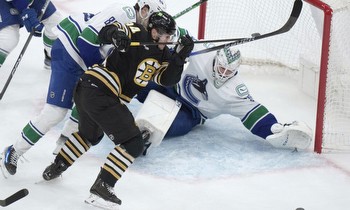
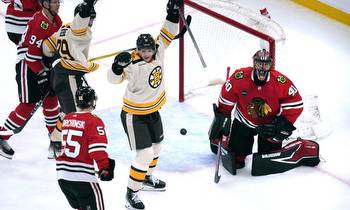





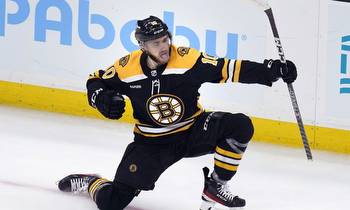


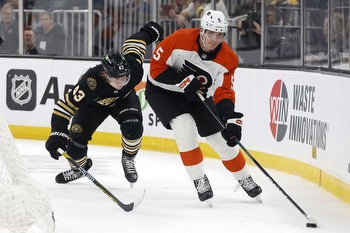

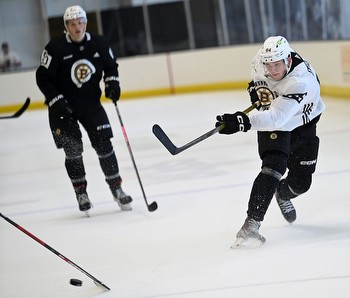

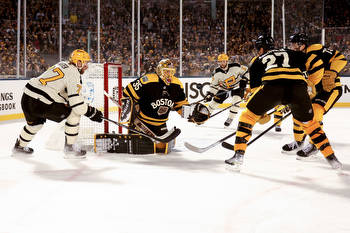
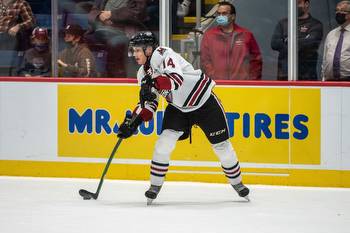

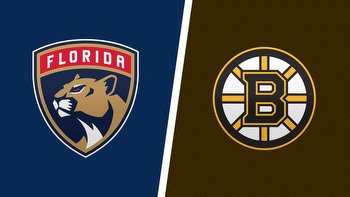

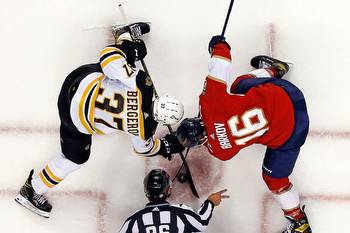
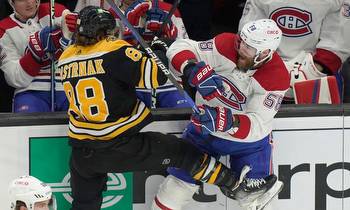


![Game 73: Bruins @ Hurricanes, Betting Lines, Preview [UPDATED]](/img/di/game-73-bruins-hurricanes-betting-lines-preview-updated-1.png)
